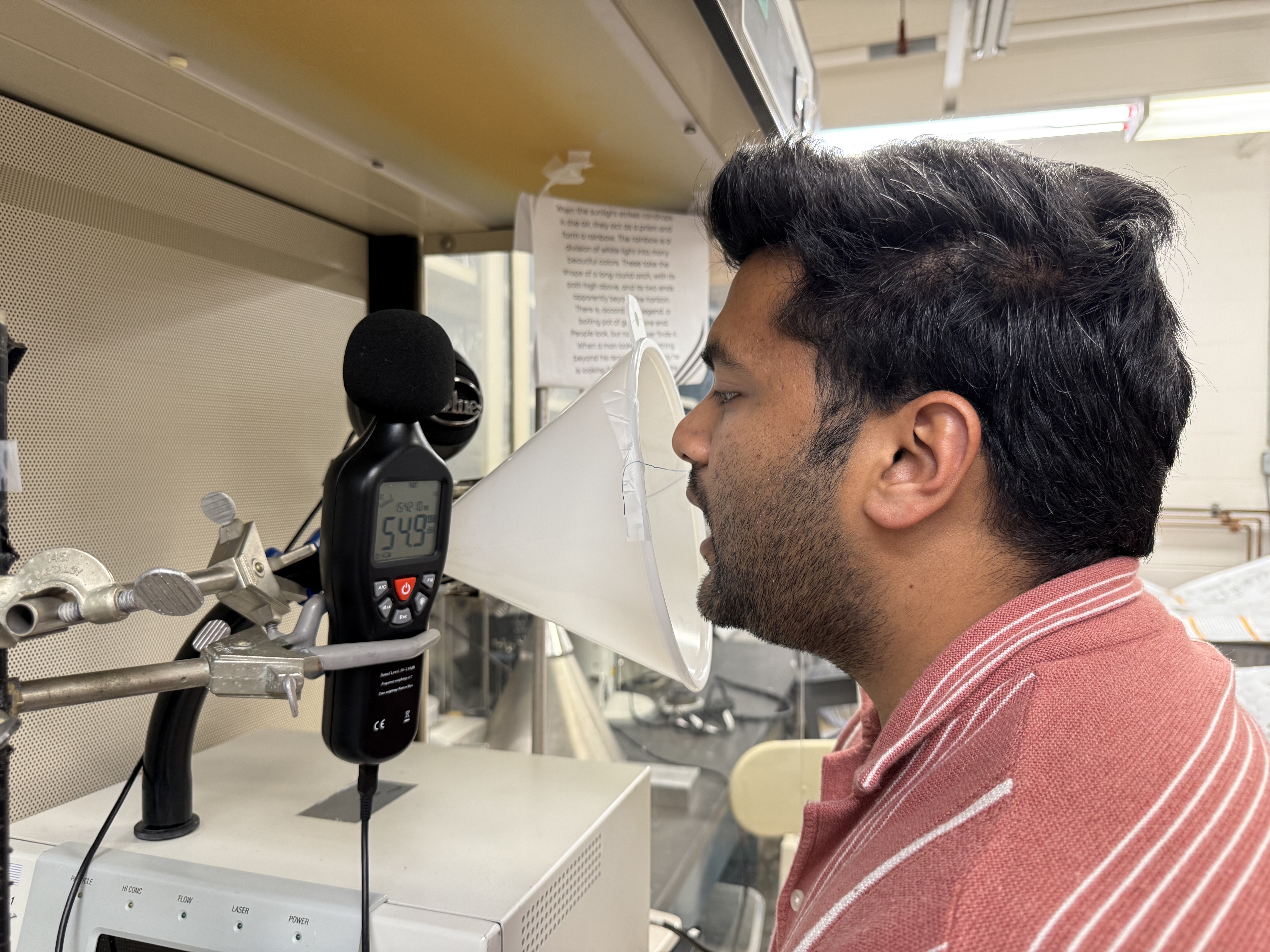Clarkson Research Reveals How Talking, Age, and Hydration Affect Airborne Disease Spread
A new study from Clarkson University is uncovering surprising clues about how simple, everyday actions — like talking or singing — may influence how diseases spread through the air in indoor environments.

PhD candidate Mahender Singh Rawat, working with Professor Andrea Ferro’s research team in Clarkson’s Department of Civil and Environmental Engineering, is studying exposure to indoor respiratory bioaerosols — the particles people release when they breathe, talk, sing or cough. These microscopic particles may carry viruses that can lead to illnesses such as COVID-19 and influenza.
The team’s goal is to make schools, offices, and other indoor spaces safer by learning what factors cause people to emit more or fewer of these airborne particles and how to mitigate them.
“Our research helps explain more about the mechanisms of particle formation in the respiratory system and why some people or situations may lead to more airborne particles than others,” Rawat said. “This knowledge can guide how we design classrooms, ventilation systems, and health policies to better protect people in indoor environments.”
The team has already shown that speaking louder or at higher pitches increases the number of airborne particles a person emits. Their research also found that older adults tend to release more particles than children and teens.
Now, Ferro is leading another study at Clarkson examining how hydration can influence respiratory aerosol emission. Early results show that people emit more particles when they are well-hydrated compared to when they are dehydrated.
Recently, the team received a grant from the National Science Foundation to support their work. Along with Rawat and Ferro, the Clarkson research team includes Associate Professor Shantanu Sur in the Department of Biology and Professor Sumona Mondal in the Department of Mathematics. Byron Erath, Professor and Department Head of Mechanical Engineering at the Rochester Institute of Technology, is the principal investigator for the associated lead collaborative project. The Clarkson team also includes researchers from the State University of New York at Oswego, Rochester Institute of Technology, and SUNY Potsdam.
“The collaboration with Professor Erath, formerly at Clarkson, and several other Clarkson faculty started more than six years ago. We pulled together a team to study airborne disease transmission in response to the Clarkson Ignite Graduate Fellowship program,” said Ferro. “When the COVID-19 pandemic hit, we were ready with our team and materials, and we secured funding from the National Science Foundation early on. We have helped answer important scientific questions on respiratory aerosols over the past several years and will continue to make progress with our newest project.”
These findings will help improve models that predict how respiratory droplets transmit and remain suspended in the air, especially in shared environments such as classrooms and workplaces. This research could lead to more accurate public health guidelines on ventilation, masking, and disease prevention.
Rawat presented findings from this work at the Joint Annual Meeting of the International Society of Exposure Science and the International Society for Environmental Epidemiology (ISES–ISEE 2025) in Atlanta, Georgia, where he earned an award in the Student and New Researcher Poster Competition.
